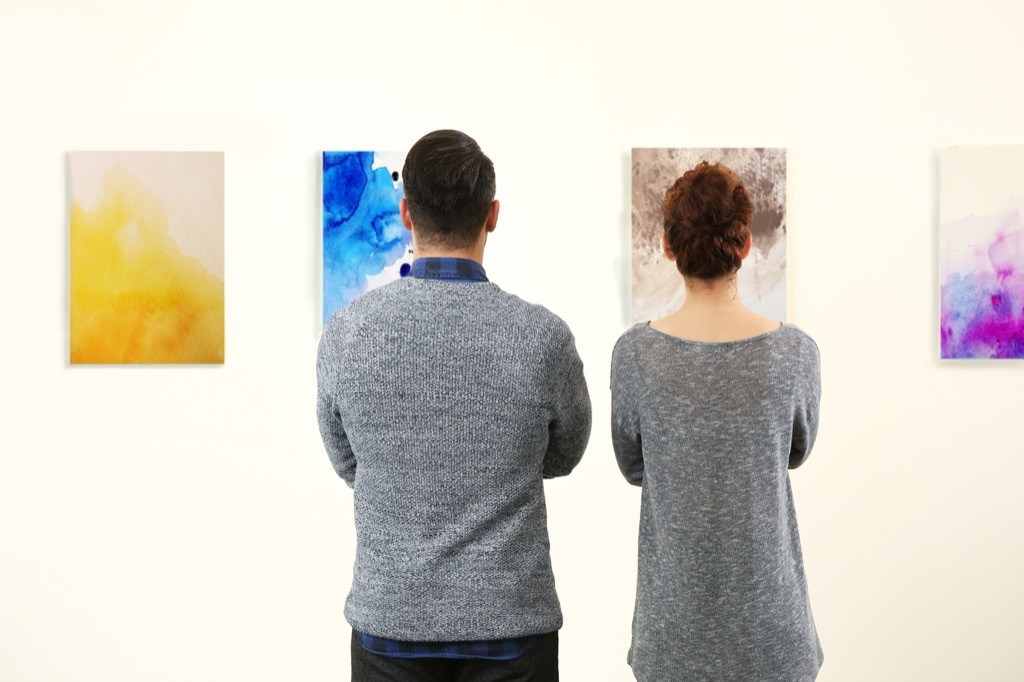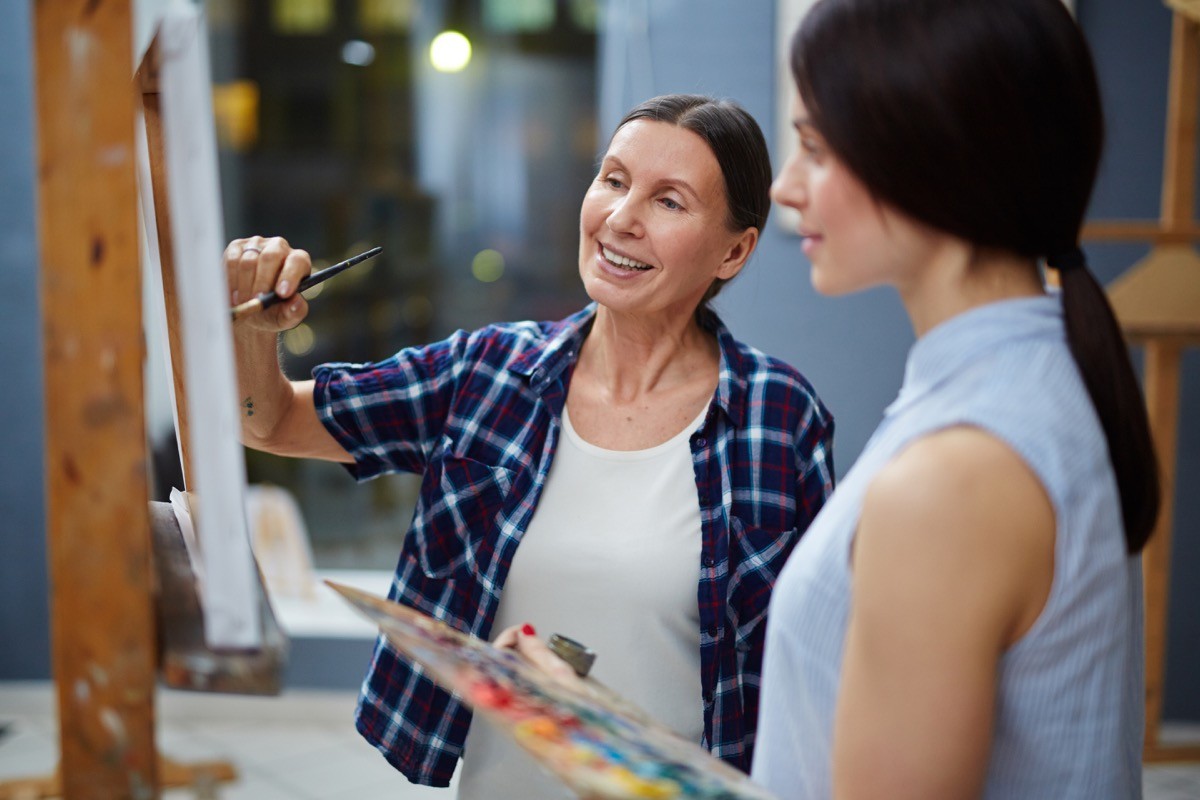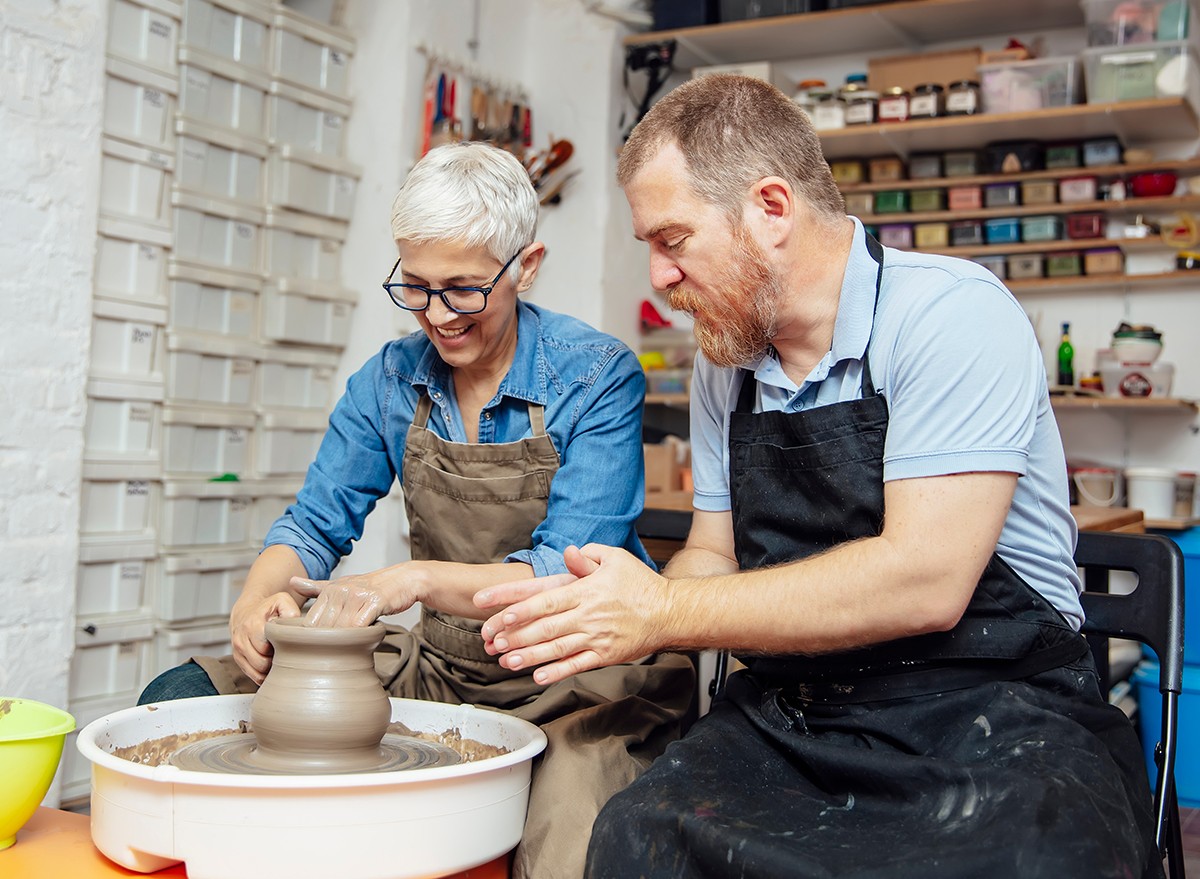Doing This Once a Month Can Extend Your Life Up to 10 Years, New Study Shows

What if doing just one thing a month—something fun, inspiring, and fulfilling—could impact your health so much it could extend your lifespan by 10 years? That’s what engaging in art does, experts say. “We are literally physiologically wired for the arts,” Susan Magsamen, founder and director of the International Arts + Mind Lab, Center for Applied Neuroaesthetics at Johns Hopkins University School of Medicine, tells CNN. “Input from our senses builds connections among our brains’ 86 billion neurons. Engaging with art, whether as a spectator or creator, actually brings information into our bodies and profoundly impacts our biological circuitry.” So next time you go to a museum, music show, art gallery, or anything else that peaks your interest, you could be giving yourself an incredible gift. Read on to find out more.
RELATED: 2 New Diet Changes Can Help You Live Longer.
Art and Your Physical Health

Art is known to impact physical health in a myriad of ways. “Pinning down a definition of art can make some of the research tricky, but what we know suggests that artworks have very real effects on our mental and physical well-being,” Magsamen, who wrote bestseller Your Brain on Art: How the Arts Transform Us with coauthor Ivy Ross, says. “Physicians around the world prescribe visits to museums, engagement with arts and encounters with beauty. Different art forms affect the brain and body in different ways. Just as when we are prescribed medications, (it’s true that) types, doses and durations of art work differently for different people.”
Art and Healing

Art has been used as a tool for healing throughout history. “Creative arts therapy is used in treatment for a variety of conditions spanning mental health, cancer, stroke and more,” says the Mayo Clinic. “The idea behind creative arts therapy is that artistic expression can help people to feel better and motivated to recover and address clinical needs such as reducing anxiety and blood pressure.”
Art and Mental Health

Engaging with the arts has been shown to positively impact mental health, experts say. “In the 1940s, healthcare providers noticed that people with mental illness would express themselves through art,” says the Mayo Clinic. “This observation inspired the use of creative arts therapy as a healing technique for conditions including anxiety, depression, mood disorders, schizophrenia and dementia. Creative arts therapy is used to help treat mental health conditions because it can improve focus, assist with processing emotions, improve communication and increase self-esteem.”
Just 20 Minutes

Just 20 minutes of art once a month—something as simple as doodling—can extend your lifespan. Or try dancing, or pottery, or gardening… The list is practically endless. “You don’t need to be good, but you have to be all in,” Magsamen tells Fortune. “You don’t have to be good at the arts to have great benefit.”
RELATED: The 10 Best U.S. Cities to Visit for Art Lovers.
Art and Holistic Health

Art has whole-body holistic benefits for people. “The arts are being used in at least six distinct ways to heal the body: as preventative medicine; as symptom relief for everyday health issues; as treatment or intervention for illness, developmental issues, and accidents; as psychological support; as a tool for successfully living with chronic issues; and at the end of life to provide solace and meaning,” Magsamen and Ross write in their book.
Which Art?

While no type of art is “best”, some have different impacts on your brain—for example, modeling clay. “It engages both your hands and many parts of your brain in sensory experiences,” Girija Kaimal, professor at Drexel University and a researcher in art therapy, tells NPR. “Your sense of touch, your sense of three-dimensional space, sight, maybe a little bit of sound — all of these are engaged in using several parts of yourself for self-expression, and likely to be more beneficial.”